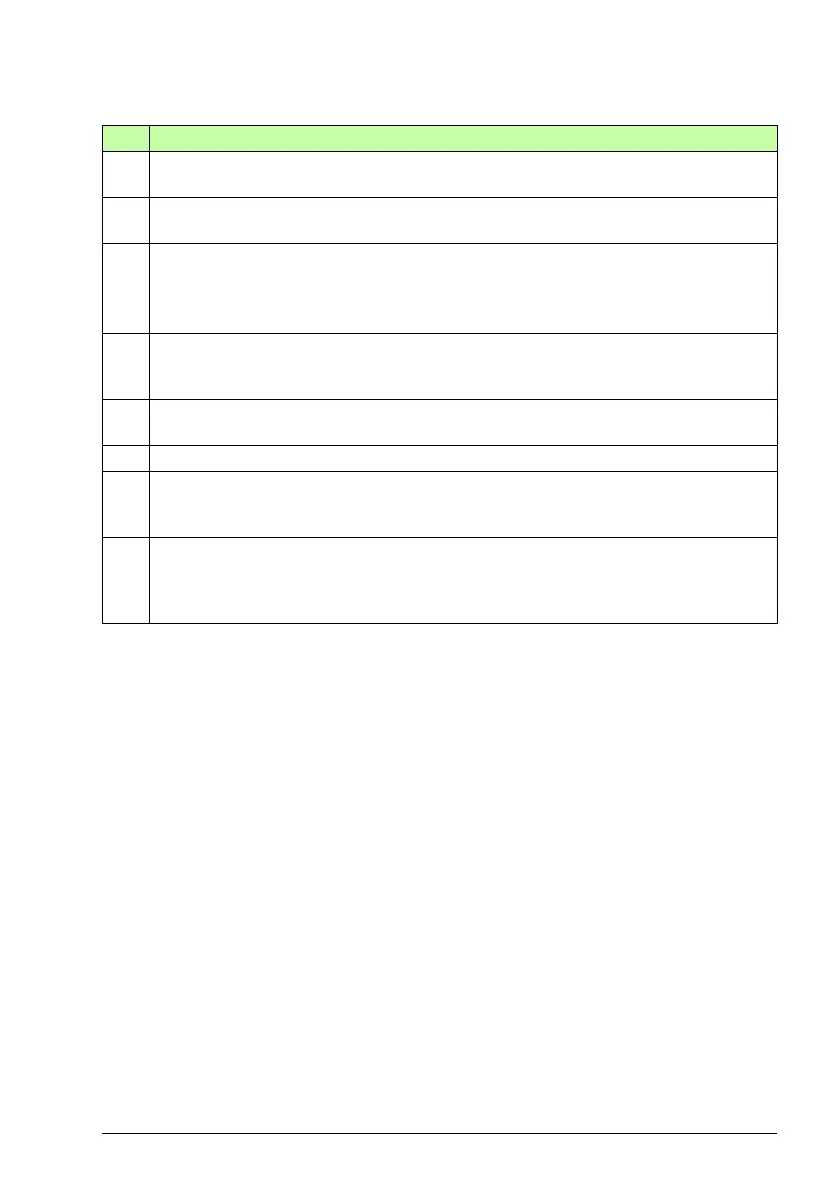Safety functions 133
Step Description
1 The SSE request is received (for example, from the I/O). The FSO starts a counter for
time B. SSE active indication SSE output (SSE.21) goes on.
2 After time E has elapsed, the drive starts to ramp down the motor speed. SAR0
parameter 200.102 defines the deceleration ramp.
3 The motor speed goes below the SBC speed limit (A), the FSO activates SBC function.
The FSO starts counters for times C and D.
Note: You can define an extra delay (parameter SSE.16, not shown in the figure) before
the FSO activates the SBC function. This affects also the STO activation (step 4).
3b If the drive has not ramped down fast enough when time B has elapsed, the FSO
activates the STO function. See section Safe torque off (STO) on page 67 for more
information on how to configure the STO function.
4 After time C has elapsed, the FSO activates the drive STO function. STO active
indication parameter STO output (STO.21) goes on when STO is activated.
5 The SSE request is removed.
6 After time D has elapsed, the safety function is completed, the SSE completed
indication goes on and the acknowledgement becomes allowed as soon as the SSE
request has been removed (step 5).
7 After the acknowledgement, the SSE, STO and SBC functions are deactivated and the
control is given back to the drive, which is allowed to modulate again. The indications
SSE output (SSE.21), SSE completed output (SSE.22), and STO output (STO.21) go
off.
